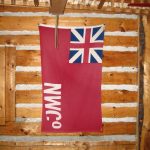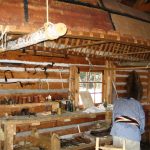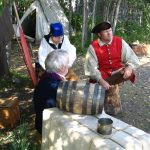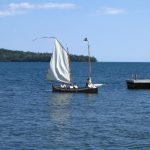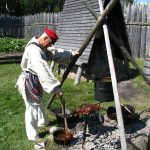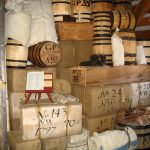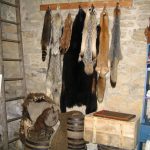5 Fur Traders: Economic and Cultural Exchanges

From the earliest stages of European exploration onward, the quest for imperial wealth and power drove competition in North America. Spain, France, Great Britain, and to a lesser extent Denmark and Sweden all rushed to found colonies, claim territory, and to convert abundant resources into economic power. Spain, having sponsored Columbus, established an early presence in the Caribbean which quickly expanded to create vast wealth from cultivating sugar and the mining of precious metals. Unable to dislodge Spain from the Caribbean basin, France looked to Canada to establish its foothold. The northeastern coast of North America did not support large-scale agriculture, nor did it yield vast deposits of precious metals. It was, however, teaming with fish and fur-bearing animals and it was on these resources that the French focused their colonial efforts.
Although Great Britain, Denmark, and Sweden established colonies further south along the Atlantic seaboard and traded goods for furs with American Indian nations, from the early 1500s to the middle of the 1700s, the French, under the auspices of its colony New France, claimed the territory and controlled trade in around the Great Lakes and into the interior of what is today south-central Canada and the upper reaches of the American middle west.
From the establishment of the Hudson’s Bay Company in 1670, through its conquest of New France a century later, Great Britain ultimately proved successful in dislodging the fur trade from French control. By the 1790s Britain’s North West Company had established its inland headquarters at Grand Portage in what is now the northeastern-most corner of Minnesota. Through Grand Portage the North West Company connected Montreal with over a 120 furring posts west of Lake Superior – it was a massive enterprise that connected Minnesota to the rest of the world. The arrival of the United States in 1783 and its expansion in 1803 ushered in a new and final phase of the trade administered through the American Fur Company’s headquarters near Fort Snelling in southeastern Minnesota. By the 1850s, the fur trade had ended in Minnesota as changing fashioned in Europe, depletion of game, and the American hunger for land all combined to undermine an international business that operated for hundreds of years.
New France
Section Highlights
- The fur trade was based on cooperation between American Indians and Europeans – each group received benefits from the trade.
- France controlled the Great Lakes fur trade from the early 1600s until the 1760s.
- France adopted existing trade and diplomacy practices and learned the customs and languages of their American Indian trading partners.
- French traders intermarried into American Indian communities.
- The Britain chartered the Hudson’s Bay Company in 1670 to challenge the French dominance in the Great Lakes fur trade.
The fur trade depended on a cooperative working relationship between American Indians and Europeans. Both sides got something from the arrangement they couldn’t get without close cooperation with the other. The Europeans received fur bearing animal pelts in high demand which they used to make coats and hats. The American Indians received European manufactured goods such as tools, kettles, knives, needles, beads, fabric, dyes, guns, ammunition, etc. – things that made their lives easier. As the trade expanded from the coastline inland, the French established trading outposts at Quebec in 1608 and Montreal in 1642. This expansion coincided with two important developments. First, the Ojibwe were in the middle of their migration into the Great Lakes region which allowed them to become the essential link in connecting French traders with people further west including the Dakota living in what would become Minnesota. Second, the beaver hat became extremely popular in Europe. The underfur of the beaver is soft, rain resistant, and easily manufactured into a felt – perfect for making a variety of hats then in fashion in Europe. Having depleted the beaver populations in Europe, the French and others looked to America to supply the coveted furs.
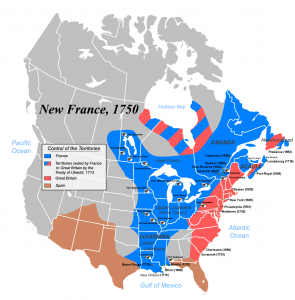
The French controlled the fur trade through the Great Lakes and into middle of the North American continent from its origin through the middle of the 18th century. In doing so, they adopted the customs of diplomacy and trade already existing between American Indian nations for generations. French traders and voyageurs lived among American Indian communities, adopted their culture, learned their languages, and often times married American Indian women. Not only did these marriages tie traders to American Indian communities economically, they also resulted large numbers of children of mix ethnicity who later served as a bridge between two cultures becoming more connected and dependent.
While French traders went into the interior to live and trade in American Indian communities, the British initially took a different approach in their attempt to challenge the French dominance in the upper Great Lakes. In 1670 King Charles II granted a charter to the Hudson’s Bay Company to trade throughout the Hudson’s Bay drainage area, then still technically part of New France. Rather than sending traders into interior as had the French, the British established posts around the bay and waited for American Indians to bring their furs to them. Regardless of Britain’s less-effective approach to trade, imperial warfare wrestled political control of the region away from France to Great Britain. While the French would lose control of the territory surrounding the Hudson Bay in 1713, and the entirety of New France in 1760, many of the French Voyageurs continued to work in the fur trade now under British control. Although the Hudson’s Bay Company continued relying on larger trading posts, other British fur trading concerns adopted an approach that mirrored the French tactic that sent their traders into the interior. With many French Canadians continuing to supply the labor for the British-run fur trade, French language and collaborative customs endured under British administration of the trade which lasted from 1763 into the early 19th century.
Grand Portage – the Voyageur’s Highway
Section Highlights
- Grand Portage in the northeastern-most corner of present-day Minnesota became an important inland hub of the British fur trade.
- During the early 1780s small pox devastated Ojibwe populations in northern Minnesota.
- Montreal traders founded the North West Company in the early 1780s.
- The North West Company established its inland headquarters at Grand Portage in the mid 1780s where it connected Montreal to some 120 furring posts west of Lake Superior.
- In 1802 the North West Company moved its operation north into British territory to avoid regulation and conflicts with the new United States.
Although the French-Canadian voyageurs continued to play their instrumental role in the trade, British take over did result in significant changes. Unlike the French, who attempted control the fur trade through the government-sanctioned New France Company, the British opened the trade up to competition. By the mid-1760s virtually anyone who could afford a license could legally engage in trade throughout the Lake Superior region. While the lack of oversight did initially provide the Ojibwe, Cree and Assiniboine more bargaining power, it also created a chaotic and violent atmosphere of ruthless competition among British traders carried out in a region free of any kind of law enforcement. Massive amounts of alcohol – coveted by American Indians, French-Canadian voyageurs, and British traders alike – saturated the trade and made the situation even more dire.
Around this same time, the Grand Portage, located on the western edge of Lake Superior in what is today the northeastern-most corner of Minnesota, replaced Fort Michilimackinac as Britain’s western-most trading outpost in the Great Lakes region. The local Ojibwe people knew the portage as the Great Carrying Place because it by-passed a treacherous 8 ½ mile stretch of the Pigeon River that connected Lake Superior to the vast interior west of the lake. Europeans soon took to calling the portage “the voyageur’s highway.” By the late 1770s, nearly 40,000 pounds of goods and furs passed over the portage each season and as many as 500 people came to the area engaged in the trade. The lack of regulation and absence of any governing authority, however, made the Grand Portage a dangerous and scary place. One trader described it as “a pent-up hornet’s nest of conflicting factions in rival forts.” Another lamented “the traders [were] in a state of extreme hostility, each pursuing his own interests in such a manner as might most injure is neighbor.”[1]
As the Grand Portage was emerging as the crucial junction point of the chaotic trade west of Lake Superior, the British colonies along the Atlantic coast rose up against Great Britain and won their independence in a war that raged from 1775 to 1783. While no battles were fought in what would become Minnesota, the war did result in two critical developments that impacted the region. First, small pox devastated colonial armies and spilled over through trade networks to decimated the Ojibwe and, to a lesser extent, the Dakota people living in Minnesota. Ojibwe peoples at Grand Portage, Leech Lake and Rainy Lake were hit particularly hard hit by the pandemic in 1782 and 1783. Second, trade moving from Fort Michilimackinac, down the Wisconsin River, up the Mississippi River to the Dakota was disrupted. This interruption made the trade moving through the Grand Portage even more important.
Two years after the war concluded and the new United States of America claimed lands east of the Mississippi River, a group of British merchants from Montreal and prominent fur traders operating out of Grand Portage combined to form the North West Company. The company quickly created a monopoly and pushed out most smaller companies and independent traders. As the North West Company consolidated power it built a trading outpost on the Superior side of the Grand Portage that grew to include some 16 structures surrounded by palisades. During the 1790s the North West Company’s operations at the Grand Portage reached its peak and the company bypassed its rival Hudson’s Bay Company in size, reach, and volume. The depot became the transshipment point for trading goods arriving from Montreal and furs flowing in from over 100 posts throughout the interior west of the Great Lakes.
But Grand Portage’s trading peak proved short-lived. Fears of US government intervention convinced the North West Company to move its operations north into British territory in 1803. The following year it enveloped the XY Company (a smaller rival formed in 1798) before merging with the Hudson’s Bay Company in 1821.
The Voyageurs
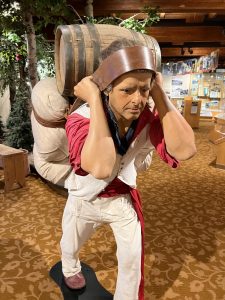
The voyageurs were the workmen of the fur trade. They paddled limitless miles in canoes, portaged goods and furs across countless portages and provide all of the labor required during the fur trade. Mostly French Canadian or Metis (a person of mixed American Indian and European heritage), the voyageurs left behind a legacy of the jovial workman – they dressed colorfully and sang to keep the time and stave off the boredom as they paddled. Many, however, found themselves stuck in disadvantageous contracts that left them in debt to the company and therefore stuck in a hard life of unrelenting labor.
There were two distinct categories of voyageurs in the trade west of Lake Superior:
North Men:
The North Men were voyageurs who spent the winters in the interior supplying the labor for the posts. Responsibilities included transporting goods into the post in the fall and furs out of the post in the spring. During the winter they provided the labor required to establish and operate the post. In the trade west of Lake Superior, voyageurs who spent their first winter in the interior were recognized with a plume to signify the first time they cross the continental divide west of the lake. Other names for this group include: Nor’ Westers, and Winterers.
Montreal Men:
The Montreal Men transported trade goods from Montreal to Grand Portage in the spring and furs from Grand Portage to Montreal in the fall. They paddle large Montreal canoes capable of transporting over a ton of cargo and requiring ten to 16 men to power. Often Montreal Men paddled fourteen hours a day for up to two months in their runs between Montreal and Grand Portage. In addition to transporting good in canoes though the lakes, their contracts typically required that they take a certain number of 90-pound bundles across the portage as well. Other names for this group include: Greenhorns, and Pork Eaters.
Rendezvous
Section Highlights
- By the 1790s the North West fur trade administered through the Grand Portage became a massive business that brought some 1,200 people together in a yearly cycle.
- The annual summer rendezvous held at Grand Portage became the highpoint of the Lake Superior fur trade.
By the1790s the Grand Portage had become the focal point of the seasonal trading cycle administered by the North West Company west of Lake Superior. In doing so it not only filled a vital economic role, but it also served as a meeting point for cultural exchanges between the Ojibwe, French Canadian voyageurs and British traders – many of Scottish descent. At its height, the fur trade seasonal cycle operating out of Grand Portage, looked something like this:
Fall
In the late summer or early fall, greenhorn voyageurs left Grand Portage in canoes loaded with furs collected from the interior the preceding winter. The massive Montreal Canoes each carried a ton of furs and had to be powered by up-to 16 men. They paddled daily for six or more weeks through the Great Lakes and up the St Lawrence Seaway before arriving in Montreal where merchants exported the pelts to Europe.
A second group of voyageurs – known as Nor’ Westers or winterers left for the interior laden with trade goods brought from Europe and Asia through Montreal the previous summer. Wintering Partners, clerks, and voyageurs returned to interior posts located throughout Minnesota and points beyond.
Winter
Upon arrival and establishment of their furring posts, traders provided goods to Ojibwe trappers on credit. Throughout the winter, Ojibwe men hunted and trapped fur-bearing animals, while Ojibwe women prepared pelts and conducted trade negotiations at fur posts. Wintering Partners supervised trading posts, while clerks kept accounts. Ojibwe families provided not only pelts but also food as part of the trade.
Spring
Partners, clerks, and voyageurs concluded trading, finalized accounts for the season, packaged furs, and began the journey back to Grand Portage.
In Montreal, merchants hired voyageurs to paddle canoes filled with trade goods headed to the Grand Portage.
Summer
During the summer, fur traders from the interior arrived at Grand Portage with the furs collected throughout the winter. Voyageurs and clerk received their salaries much of which was spent on goods, food, and drink purchased from North West Company stores within the post. Meanwhile, merchants form Montreal traveled to the Grand Portage to hold annual business meetings with the wintering partners arriving from the interior. Ojibwe families also traveled to and spent time trading at Grand Portage during the summer. All of this activity was the high point of the cycle and referred to as the rendezvous. At its height, perhaps upwards to 1,000 people representing all the different players in the fur trade participated in the annual rendezvous at Grand Portage.
The Grand Portage National Monument
The North West Depot at Grand Portage
text here
- North West Company flag
- North West Company re-enactor.
- Voyageur re-enactors
- Re-enactment of Montreal Canoes arriving at the Grand Portage
- Re-enactor portraying a voyageur
- Great Hall and Kitchen at the North West depot at Grand Portage
- Trade goods stock piled at Grand Portage
- The Grand Portage National Monument. January 2022.
NOTE: You can click on these images to enlarge them. After viewing an image, use your browser’s back arrow to return to the book. Photograph by Kurt Kortenhof July, 2004-2022.
The American Fur Company
Section Highlights
Type your learning objectives here.
- The American Fur Company, founded in 1808, came to dominate the fur trade in Minnesota after the North West Company moved its headquarters out of Grand Portage.
- The geographical focus of the fur trade moved from Grand Portage to Fort Snelling which was built in the early 1820s.
- The American period of the fur trade was short-lived as fashion tastes in European changed, game became harder to harvest, and an American quest to acquire ownership of land all combined undermined the trade.
Threatened U.S. regulation convinced the North West Company to move its headquarters from Grand Portage north to Fort William near what is now Thunder Bay, Ontario, in 1803. Despite the relocation of its headquarters, North West interior posts remained operating in Minnesota and throughout the Lake Superior region well into the second decade of the 19th century. Regardless, the American Fur Company, founded in 1808, soon came to dominate the trade in Minnesota. The conclusion of the war of 1812, after which the British agreed to do a better job of respecting American territorial sovereignty and President Monroe’s 1817 declaration that closed all trading on US soil to non-U.S. citizen further solidified the American Fur Company’s position. In many cases, especially for those trading with the Dakota in southern Minnesota, British traders who were often of French-Canadian ancestry simply became American citizens and continued their work. In time, many came to work for the American Fur Company.
From their headquarters in southeastern Minnesota near the meeting point of the Mississippi and the Minnesota Rivers, the American Fur Company had established a monopoly on most trade in Minnesota by the early 1820s. Several years early, the US military began construction on a post that became Fort Snelling to help, among other things, to administer the trade. A profitable business in trading furs for the American company proved to be temporary, however, as changing fashions in Europe, depleted resources in Minnesota, and an encroaching nation hungry for land all combined to undercut the centuries-old trade.
The American Fur Company at Mendota
The Minnesota Historical Society’s Sibley Historic Site in Mendota depicts, among other things, the fur trade under the American Fur Company.
- Henry Hasting Sibley Historic House
- American Fur Company trade goods
- American Fur Company pelts
- American Fur Company fur press
NOTE: You can click on these images to enlarge them. After viewing an image, use your browser’s back arrow to return to the book. Photograph by Kurt Kortenhof July, 2004.
Cultural Impacts
Section Highlights
- The fur trade facilitating a meeting and, to a certain extent, merging of cultures.
- Ojibwe and Dakota Women played a leading role in these cultural connections as they entered into marriages with European voyageurs and traders.
- The children of Mix European and American Indian heritage will go on to play a leading role as the two cultures become increasingly connected in the new United States.
The fur trade proved hugely successful in brining trade goods to the Ojibwe and Dakota that made their lives easier while providing sought-after fur for markets in Europe. In addition, and perhaps more importantly historically, were the cultural ramifications that came with that trade. The fur trade connected Minnesota to the world not only economically, but culturally as well. It brought together merchants, partners and clerk from Scotland and England, French Canadian voyageurs, and Ojibwe and Dakota people. In the process of exchanging goods, these cultures merged in the lands west of Lake Superior. Not only did American Indians adopt European goods, but Europeans adopted the foods, dress and technologies of the Ojibwe in the north and the Dakota further south.
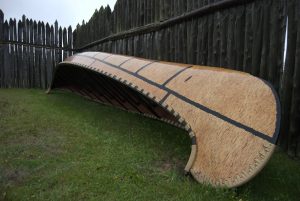
Clearly, Ojibwe and Dakota women stood at the very center of this cultural connection. From an economic perspective they played a crucial role in preparing animal pelts for European traders and often took the lead in trade negotiations at the post level. Far more importantly, however, were marital unions that brought French Canadian voyageurs, and British and Scottish clerks and partners together with Ojibwe and Dakota women. These marriages certainly facilitated economic relationships, but more importantly they served to connect and merge cultures. Many of the children born of these unions grew up connected to both cultural traditions and proved invaluable moving forward. With language skills a multicultural understanding these children and their children went on to help navigate a future that brought both the American Indian and European cultures closer together in the new United States.
Conclusion
North of Minnesota, in 1821 the Hudson’s Bay Company absorbed the North West Company as the fur trade declined. The following decade silk replaced fur as the most sought-after material from which to fashion hats. The resulting decline in demand combined with increased difficulty in harvesting depleted populations of fur-bearing animals combined to undercut the very foundation of the trade. Debts at all levels north and south of the international border went unpaid and the international fur trade that dominated the interior of North America and connected it to the rest of the world for hundreds of years slowly faltered.
Throughout its history the fur trade west of Lake Superior drove not only the economics of the area, but also served as the conduit for cultural exchanges between Europeans, the Ojibwe, the Dakota and other American Indian nations. The trade changed all groups involved and left of legacy through children born of European-American Indian unions and the unique culture created during the centuries-long collaboration. Just as importantly, however, the fur trade left Ojibwe and Dakota people dependent on trade goods, troubled by the introduction of alcohol, and saddled with unpayable debt. In the coming decades, the United States government used these realities to push land-cession treaties from American Indian in Minnesota and elsewhere.
Suggestions for Further Inquiry
Blegen, Theodore. Songs of the Voyageurs. St Paul, Minn.: Minnesota Historical Society Press, 1966.
Ehrenhalt, Lizzie. “Grand Portage (Gichi Onigamiing).” MNopedia, Minnesota Historical Society. http://www.mnopedia.org/place/grand-portage-gichi-onigamiing (accessed December 30, 2021).
Lurie, Jon. “Fur Trade in Minnesota.” MNopedia, Minnesota Historical Society. http://www.mnopedia.org/fur-trade-minnesota (accessed December 24, 2021).
“The Fur Trade,” Historic Fort Snelling. Minnesota Historical Society. https://www.mnhs.org/fortsnelling/learn/fur-trade (accessed December 24, 2021).
White, Bruce M. “Give Us A Little Milk: The Social and Cultural Meanings of Gift Giving in the Lake Superior Fur Trade.” Minnesota History Summer, 1982. pp. 62-71.
Wingerd, Mary Lethert. North Country: The Making of Minnesota. Minneapolis, Minn.: University of Minnesota Press, 2010.
- Wingerd, Mary Lethert Wingerd, North Country: The Making of Minnesota. (Minneapolis, Minn.: University of Minnesota Press, 2010), 59. ↵
Grand Portage (Gichi Onigamiing) is both a historic seasonal migration route and the traditional site of an Ojibwe summer village on the northwestern shore of Lake Superior. In the 1700s, after voyageurs began to use it to carry canoes from Lake Superior to the Pigeon River, it became one of the most profitable fur trading sites in the region and a headquarters for the North West Fur Company.
Lizzie Ehrenhault, MNOpedia - https://www.mnopedia.org/place/grand-portage-gichi-onigamiing
The U.S. Army built Fort Snelling between 1820 and 1825 to protect American interests in the fur trade. It tasked the fort’s troops with deterring advances by the British in Canada, enforcing boundaries between the region’s Native American nations, and preventing Euro-American immigrants from intruding on Native American land. In these early years and until its temporary closure in 1858, Fort Snelling was a place where diverse people interacted and shaped the future state of Minnesota.
Matthew Cassady and Peter DeCarlo, MNOpedia - https://www.mnopedia.org/place/fort-snelling-expansionist-era-1819-1858

